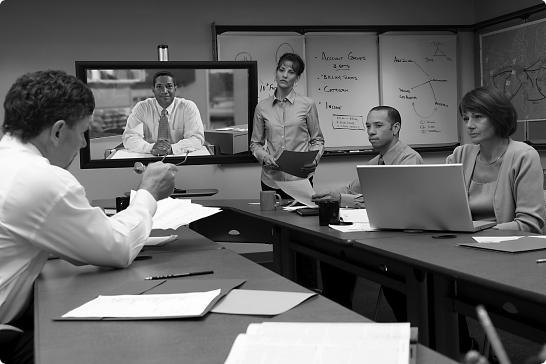Managing Meetings Effectively
Managing Meetings Effectively
Page 225
So you now see that meetings can go well—or they can go horribly off track. During a meeting, it is the responsibility of the leader to manage the discussion in ways that help the group communicate while remaining focused on the meeting’s goal. The following steps can help.
Arrive Prepared. In a 2005 interview, veteran businessman and writer Simon Ramo estimated that he had attended forty thousand meetings during his career, so he had a strong sense of what works and what doesn’t. When running a meeting, the most important thing for a leader to do, Ramo advised, is to be prepared. If you’ve planned properly, you are fully aware of your goals for the meeting and familiar with all the background information you’ll need.
Keep the Group Focused. It’s also important to know who the participants are. You should have a sense beforehand of which participants are likely to be the biggest contributors, as well as who will likely need to be kept on track. When a member brings up a topic that’s not on the agenda or goes off on a tangent, Ramo advised, “As tactfully as possible, interrupt to move the discussion along” (“Why Most Meetings Stink,” 2005). This might be as simple as saying, “We’re getting off the subject here,” and bringing the group back to the main topic of the meeting.
Of course, as the meeting progresses, it is likely that the goal may be redefined or new goals may emerge. “Keep the objective of the meeting constantly in your mind so you’ll keep moving toward the goal,” Ramo advised. “But if the goal changes during or because of the meeting, be prepared to invent Plan B.”
Summarize Periodically. As a group explores and settles on decisions, it’s important that someone (a leader or any member) regularly summarizes what has happened. Summaries provide members with opportunities to confirm, correct, or clarify what has occurred so far during the conversation. Summaries thus help ensure agreement, delineate the next steps, and direct members on how best to carry out their designated tasks.
Keep an Eye on the Time. Nobody likes wasting time sitting through a long meeting when a short one would do. Group leaders need to be aware of time constraints to keep their meetings running efficiently and to respect the time pressures on the other members. When large groups are involved or when the agenda includes many topics or issues, it can be helpful to impose time limits on certain components of the discussion. When a decision must be made, taking an informal vote—called a nonbinding straw poll—can help move the group forward.
Manage Conflict. As you saw in chapter 8, the best decisions are usually those that have come from productive conflict (Kuhn & Poole, 2000; Nicotera, 1997). When group members deal with conflict productively, they ask clarifying questions, respectfully challenge one another’s ideas, consider worst-case scenarios, and revise proposals as needed to reflect new information and insights. This process leads to sound decisions because it enables group members to generate the widest possible range of ideas as well as test each idea’s pros and cons. An idea that survives this rigorous process has a better chance of succeeding in action.
The other advantage of productive conflict is that the group members who have a hand in exploring and arriving at a decision will feel a greater sense of ownership over that decision, which leads to greater commitment.
The other advantage of productive conflict is that the group members who have a hand in exploring and arriving at a decision will feel a greater sense of ownership over that decision, which leads to greater commitment. Thus, decisions made through productive conflict have a greater chance of being implemented. That’s a good thing, since even the most brilliant decision is useless unless a group puts it into action.
For this reason, making decisions by consensus is often a better approach than making decisions by majority vote. According to the consensus approach, everyone must agree on the final decision before it can be implemented. It takes more time than deciding by majority vote, but because of its power to enhance feelings of ownership and commitment from group members, consensus should be used whenever time allows.
Follow Up. After the meeting has concluded, group members should implement their decisions and take stock of the results as well as the experience of working together. A simple follow-up e-mail that details the decisions reached at the meeting can ensure that everyone came away with the same perceptions and is aware of what each person must do to keep the group moving toward its goal.
